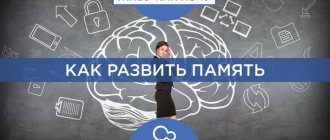In this article we will tell you:
- 3 factors influencing a woman’s personal growth
- The effectiveness of personal growth exercises for women
- Rules for performing exercises for personal growth for women
- 5 Exercises for Personal Growth for Women
- Personal growth books for women
- Adequate self-esteem is the main condition for personal growth
Personal growth exercises for women and men are especially popular today. Modern man strives for development and self-improvement, including psychologically. If there is no such desire, then life will be devoid of many colors, and some opportunities may be missed.
In our article we have collected the most effective exercises for development. In addition, we will tell you what factors influence self-esteem and personal growth, explain why this topic is so important, and even recommend several useful books on this topic.
The effectiveness of personal growth exercises for women
Currently, women are subject to different requirements than before; it is believed that she must perform household duties and work no less than her husband, bringing her share to the general budget. For many women, such demands lead to a stressful state when she has to do everything, and also look well-groomed and beautiful. Not all women are ready to put up with such a situation, and some become just a housewife, while others choose a career. Unfortunately, having made a certain choice, a woman does not always stop feeling dissatisfied with life. Performing personal growth exercises will help her achieve a harmonious state, balancing her own life and the demands of society.
Nowadays it is not difficult to find literature aimed at creating a stable psychological state of a person. The first authors in our country were Dale Carnegie and Kurt Lewin. Psychological training should not be taken lightly, because thanks to it a person learns to communicate correctly, live without compromising his desires and resolve emerging external and internal conflicts. In this case, a person performs a difficult task, working on himself.
It is important to entrust the learning process to a professional psychologist who will select the necessary exercises for you, monitor their implementation and analyze the results. An indispensable component of such trainings are games and homework. By doing the exercises and practicing them at home, you will get results much faster. As a result, a woman is calmer about problems, she knows how to deal with them, she is confident and collected.
Exercise 3. “But...”
This exercise will help resolve the problem or, at least, relieve the stress associated with it. This exercise requires a group of several people.
On pieces of paper, each participant in the game must write down a stressful situation that worries him, or an unfulfilled desire, or a conflict situation from which he cannot find a way out (it is not necessary to sign the sheets). The collected leaves are mixed. Then each note is read out in turn, and each participant must come up with as many arguments as possible in favor of the fact that the situation is not so bad, solvable and even funny. The use of connectives “that’s great, because...”, “but now...”, “but it could have been worse”, “I didn’t really want to, because...” is encouraged.
At the end, the results of the game are discussed, and it is proposed to voice what real help each of the participants in the game received.
Rules for performing exercises for personal growth for women
Man is not static by nature; he tends to develop. However, sometimes it is not easy to determine the paths of development, and then personal growth exercises come to the rescue. Thanks to them, a woman determines for herself what she wants and can achieve in this life. Exercises are a set of strategies according to which she knows how to behave in a certain situation and how to achieve a specific result.
The very first step can be considered taking responsibility for your life. No one but you can or should cope with your difficulties. Your task is to trust yourself, your strengths and begin to act. Exercises for personal growth are the mechanism that will awaken your inner strengths and set you on the path to yourself.
Methods include the following: writing down spontaneous thoughts, visualizing goals, and performing relaxation exercises.
For some people, the effectiveness of psychological methods and techniques is sometimes in doubt. But while one doubts, is unable to understand the flow of problems, others analyze and correct their lives. Perform these exercises on a regular basis if you want to get the most benefit from them.
There are several basic rules for performing exercises, following which you will achieve the best results.
- Perform the exercises systematically, let it be one, but regular.
- Take a break from other activities while doing it and focus completely on it.
- Agree with yourself that you will do the exercises constantly, mark those that you will do anyway and start them only if you can put everything else aside.
Remember these rules, then find suitable exercises on the Internet or specialized literature to develop your personality and start daily exercises. We are ready to share some exercises with you.
Exercise 2. “Free Sunday evening” technique.
This technique will help you look deeper into yourself , into the world of your needs, hobbies, interests; perhaps she will even reveal herself to you from an unexpected, creative side.
It will help you “find time” that will be yours personally, that is, time when you owe nothing to anyone but yourself.
It will help you prepare for the upcoming work week, as well as become more balanced and calm: we get nervous first of all when we owe something to someone and don’t have time...
Assignment: teach all your relatives and loved ones, near and far, to the idea that on Sunday evening you are busy with your own affairs. Spend this time the way you want. The main thing is no obligations, it’s YOUR FREE TIME . Let it be just one or two hours to begin with. Very soon you will not imagine how you managed without personal time before!
Personal growth books for women
Now you can find many books that are easy and simple to read, even without being a psychologist. They are written for the general public and are available to anyone interested in personal growth. The authors of these books strive to describe the benefits of exercises as simply as possible and give advice on how to best perform them.
- N. Bu. The author offers readers his own technique, which shows women how to get attention and affection from the stronger sex. In the book you will find not only exercises for personal growth, but also neurolinguistic programming techniques and a number of communication techniques. The book was based on an analysis of the relationships between successful couples. These studies allowed the author to describe techniques that help a woman arouse interest in herself on a physical level, and most importantly, form a stable spiritual connection with a man.
The book is addressed not only to those girls whose goal is to find a partner, but also to people who want to be attractive to others, to those who want to increase their success in relationships with people.
- L. Lowndes “How to make anyone fall in love with you . The work is quite popular, because in it the author talks about how easy it is to win men. In the book you will find a “formula of love” developed by the author, tips on where to meet the person you need, and how to create strong and long-lasting relationships. It will also be interesting to get an idea of the characteristics of male and female thinking, the subtleties of dating and communication, there is even advice on intimate issues. Thanks to this book, you will know eighty-five ways to please anyone. After reading this work, you will not only meet a suitable young man, but also meet new friends, improve relationships with family and colleagues.
- G. Chapman “The Five Love Languages.” For those who already have a relationship and would like to optimize it, we recommend reading this book. After all, there are many options to help express love. But we can’t always understand that a person loves us if he doesn’t say it. The author will teach you to understand your soulmate, without forgetting about your own desires. If a couple knows how to overcome conflict situations and take into account the interests of their partner, then they have read this book.
Exercise 1. “Which step am I on?”
Draw a staircase consisting of 10 steps.
Now think about which one you are on now. Imagine this and draw yourself on the corresponding step. Happened? Your artistic abilities do not matter in this case. But the result is yes.
If you depict yourself on steps 1-4, this indicates that your self-esteem is low.
5-7 is not bad at all, this indicates adequate self-esteem .
At 8-10 - a signal to think: Your self-esteem is too high.
Definition of the concept
Personal growth training is a training event that develops a person. In fact, it is a guide that helps him achieve success in any field. This is a kick that allows you to take the first step towards building the life you want. It is usually the most difficult to accomplish. If you really start working on yourself, this process will be much easier in the future.
Personal growth training
Personal growth training teaches you to look for the reasons for failure in your own actions, and not in strangers. A person begins to feel like a subject. Formation of the necessary qualities is the main goal of such trainings. These characteristics include:
- Internality. The feeling that the person himself is responsible for all the results in life.
- Hard work. In the literal sense, love for work, including on oneself.
- Communication skills. The main provider of opportunities is other people.
- And a number of other important character traits.
How to choose the right training program scenario?
- You need to understand your own goals and choose a program that is suitable specifically for them. If you are still a beginner and are just planning to discover trainings, experts recommend starting with the “Basic Course” of the necessary system.
- Make sure of the high competence of the leading psychologist, as well as the reliable reputation of the company;
- Read reviews from people who have completed this program;
- Clarify the set of techniques used in this training;
- Correlate the time, place, format of the training and its cost with your capabilities.
We recommend that you read: How to assess your thinking abilities?
Personal development courses
Placebo effect - what is it in psychology
Training is always an active program that involves performing a large number of practical exercises. Personal development courses are more measured and include lectures and group discussions.
Man undergoing psychological test
Courses can be distinguished according to the following parameters:
- Subject. They can be aimed at one area or several: business development, personal relationships, making friends, and so on.
- Format. According to this parameter, courses are divided into closed and open. The first are aimed at people belonging to a certain group, the second - at everyone.
- Source of funding: corporations or individuals.
- Basic tools: some trainings provide development through meditation, others give the task of meeting a large number of people on the street. Still others offer a more severe method - to lie in a coffin for some time. All of them are useful, but some trainings are dangerous for the psyche. Therefore, you need to select them based on your individual characteristics.
- Degree of preparation of participants. Some trainings require developing people to have certain skills, others do not. For a beginner, the second option is preferable. There are tasks given that anyone can complete. This will have a positive impact on the student's self-esteem.
Important! No course or training can guarantee results. It depends entirely on the person himself. They can only provide opportunity. The student himself decides whether to use it or not.
Where to begin?
How to develop your personality? You need to start with an honest dialogue with your own self , for a clear understanding of personal complexes, character and temperament flaws, acquired habits that worsen the quality of life.
This is quite a difficult task, but it is many times easier than the daily work of fulfilling the intention to make yourself better, more responsible, healthier in a mental and physical sense.
Having identified the main internal enemies , you should not start fighting everyone at once.
It is more effective to choose the most annoying habit or complex so that you have enough enthusiasm and willpower to fight it.
But when you can assume that a new useful skill has become ingrained in you and has become almost innate, it’s time to begin confronting the next negative manifestation in your behavior, perception, etc.
It's better to start with what affects your physical well-being.
By getting rid, for example, of the habit of eating a lot of sweets at night, you will definitely lose some amount of fat in your body, begin to sleep better, begin to look at the world more positively and gain a reserve of strength for further feats in the fight for your happiness.
And so that in the evening you don’t feel the urge to finish with a cake or a couple of eclairs, try to start reading fiction , which you have long planned to read, but everyone couldn’t find the time.
If the desire to work with your jaws turns out to be a distracting factor, take care in advance of a substantial portion of straws from various vegetables. This way you will achieve your main goal and replenish your personal supply of vitamins and fiber.
What contributes to personal development:
- Reading good literature. New images and other people's experiences develop the brain and curiosity, provided that the sources of knowledge are worthy.
- Sports . The ability to achieve results through willpower also works successfully when deciding to achieve goals in another area.
- A conscious desire to get rid of bad habits and negative character traits .
The most worthy and insidious enemy of a person is himself when he becomes dependent on something. And every victory over one’s unworthy affections is a great contribution to the development of one’s own personality. - Communication with experts in their field. The skill of others gives a charge of enthusiasm for going through difficult paths and mastering additional skills.
- Engagement in charity in the form of personal participation in helping the weak and injured. Such communication promotes a change in personal values and an understanding of what really matters most to each person.
- Attending special trainings , provided that the presenters are really interested in providing effective assistance to their students and know how to do it professionally.
- Studying sciences that help you soberly assess your capabilities, rationally allocate time and plan navigation routes for your development and formation as an integral, developed personality.
LiveInternetLiveInternet
Developing self-reflection skills. Analysis of possible points of personal growth. Increased self-confidence. Self-expression. Development of positive thinking. Determining long-term life goals. Self-acceptance.
- Discussion “Discussion of history”
Discussion of a problematic situation, drug addiction and responsibility. - Game "Competition"
An experimental model showing the mechanisms of competition. - Game "Broker"
A game aimed at developing social thinking. - Game “Absorption”
The mechanisms of interaction in extreme conditions of social survival are developed. - Game “Press Conference: 10 years later”
Formation of strongholds for the professional growth of participants, planning of professional activities, reflection of difficulties and barriers in the process of professional development. - Brainstorm “Why do people use drugs and alcohol?”
The discussion focuses on what human needs are supposedly satisfied through alcohol and drugs and whether there are other ways to achieve the same effect. - Imagery-reflexive procedure “Tree”
The trainer invites participants to imagine a tree, after which he begins to ask questions. - Imagery-reflective exercise “Give yourself a name”
Achievement of a resourceful emotional state by each participant. - Projective drawing “I am who I am”
Developing a more objective self-esteem among participants. - Professional adaptation game “Searching for Benefits”
Helping participants who find themselves in a situation of a professional crisis to make the right choice for their further professional growth. - Career guidance game “Creation of the World”
Creative self-discovery of participants and increasing their competence in the field of social adaptation in the process of job search. - Procedure “Analysis of moments where we lose time”
Loss of time when setting a goal. Lost time during planning. Lost time when making decisions. Lost time due to insufficiently clearly organized work. Lost time when starting work. Waste of time when creating a daily routine. Lost time when processing information. - Procedure “Association Test”
Demonstration to participants that a necessary condition for organizational abilities is a fairly good reaction, the ability to “not give up,” and to fight to the end. - Procedure “Business Card”
Image at the first contact. Analysis of mini-sketches on video. - Procedure “Identifying and solving a pedagogical problem”
Developing the ability to highlight specific moments during the lesson that require the teacher’s intervention. Development of skills to evaluate your actions. Analysis of the pedagogical task and the teacher’s actions in solving it. Solving pedagogical problems with target settings. Staged pedagogical tasks with introductory notes. - Procedure “Benevolent Inquiry”
Creating an empathetic background of communication. Exchange of equivalent information. Recording the real life and business interests of the interlocutor, around which he is ready to communicate. - Procedure “Bring it to the end for me!”
Demonstration of how important it is to be able to finish what you start. - Procedure “Addiction (unfinished sentences)”
Helping participants to more deeply feel and experience the situation of addiction. - Procedure “Carousel”
Formation of quick response skills when making contacts. Development of empathy and reflection in the learning process. - Procedure “Locus of Control”
Analysis of the influence of internal and external forces on a career. - Procedure “Observation of the teacher’s work”
Taking into account the peculiarities of students’ perception of cognitive material in the lesson. - Procedure “Image of Self”
Deeper awareness of personal existence. The combination of verbal and nonverbal components of the expressiveness of a self-evaluative position. - Procedure “Responsibility (unfinished sentences)”
Help you feel what it means to feel responsible, for yourself or for others. - Procedure “Planning the Future”
Assess the possibility of backup options in different areas of life. - Procedure “Exaggeration or complete change of behavior”
Formation of skills for modification and correction of behavior based on the analysis of played roles and group analysis of behavior. - Procedure “Past, Present, Future”
Study of yourself, your resources in the past, present and future. - Procedure “Working with associations”
Development of attention in communication. - Procedure “Advertising video”
Development of assertiveness, confident behavior in communication, presentation. - Procedure “With three boxes”
A procedure for group psychological training. Aimed at overcoming attitudes of self-destruction and self-aggression. It is advisable to conduct it in well-warmed-up groups. - Procedure “Sculpture of Addiction”
Providing participants with the opportunity to deeply, down to the muscular level, feel and realize what addiction is and what happens to a person in a dependent position. - Procedure “TV commercial”
This exercise allows participants to establish their position and understand what means of influencing a youth audience can be the most effective. - “What Do You Really Think” Procedure
Awareness of the prejudices and values that determine the actions of adolescents. - Procedure “Real Self and Ideal Self”
Helping participants build adequate self-esteem. - Training procedure “Twin from afar”
This technique is intended for reflection of the value-semantic sphere of the individual, identifying the leading value orientations in a person’s life. - Training procedure “Sociological survey”
Analysis of the phenomenon of entrepreneurship. - Reflective procedure “What?
Who? How? Where? When?" Drawing up a “life program” for the next period of time, planning by the participant the desired life outcome in the field of employment. - Reflection “Here and Now”
Acquaintance with the essence of the reflection process. Processing the skill of reflection. - Role-playing game “Past Conflict”
Consolidating the experience gained during the training. - Role-playing game “Corporation”
Practicing simple managerial functions. - Role-playing game “Seduction”
Providing an opportunity to explore the situation of “seduction” in a playful way. Participation in discussion allows a teenager to develop a reasoned position and refusal skills. - Role-playing game “Shooting a film”
Practicing simple managerial functions. - Self-hypnosis “Increasing confidence”
This self-hypnosis will be useful for those people who are worried about a lack of confidence when communicating with other people. - “Sic volo” technique
The technique is designed to develop willpower, gain self-confidence and a sense of inner freedom. - “Active Imagination” technique
The technique is intended to search for internal conflicts. - “Inner Laughter” technique
The technique is designed to eliminate internal conflicts. Can be used in everyday life. - “Sunday Evening” Technique
This technique will contribute to your personal growth and crystallization of interests. If you are “worried” by circumstances, that is, you cannot boast of balance, using this technique can help you. In addition, technology can help you tune in in the optimal way for the coming work week. - Technique “Hero of Our Time”
The technique is designed to acquire, “crystallize” internal points of personal growth. - “The Last Hour” Technique
This technique is intended to change the attitude towards time, awareness of its value for a person. The technique was proposed at one time by George Gurdjieff. - Technique “Unraveling the Shells”
This technique is intended to liberate a person, gain a sense of confidence, and develop elegance in movements. The technique is based on the ideas of body-oriented psychotherapy by Wilhelm Reich. It includes thirty mini-exercises. - Technique “Stalking your own energy”
The technique is designed to take inventory of the expenditure of your own strength and energy. If it seems to you that your strength and energy are “flowing away” in an unknown direction, that the return on your life activity is close to zero, then this technique is for you. - Technique “Building Confidence”
The exercise is aimed at building and developing self-confidence and self-esteem. It can also help in overcoming fears, anxieties, self-doubts and self-limitations such as “I can’t do this” or “I’m not skilled enough.” - “Chain of Associations” technique
This technique will help in developing original ideas and unexpected solutions to a problem. Designed for uncertain situations in which all possible ways to solve the problem are not clear. - Self-management techniques
Procedures (usually daily) that increase a person’s personal effectiveness, including through the rationalization of personal time. - Training procedure “Lang's knots”
This psychological training procedure is intended to correct complex behavior based on false ideas and following established stereotypes. The procedure uses "Knots" by Ronald Lang, a Scottish psychiatrist. - Exercise “10 Commandments”
Help participants master the ranking of values and arrange them in a hierarchy. - Exercise “5 steps”
Increasing the willingness of participants to highlight priorities when planning their life and professional prospects, as well as the willingness to correlate their professional goals and opportunities. - Exercise “Self-analysis”
Self-analysis of personal qualities, skills and habits that help and hinder work as an entrepreneur. - Exercise “Blind Guide”
Demonstrates the importance of trust and the ability to instill confidence. - Exercise “Here I come”
Simulation of some elements of an interview when applying for a job and when entering an educational institution. - Exercise “Autobiography”
Providing an opportunity to feel how our past influenced our present, and how this influence continues to affect us to this day, in order to free ourselves from it and from those behavioral stereotypes that no longer correspond to our current interests. - Exercise “Self-portrait in a circle”
Increasing in a humorous form the ability of players to correlate the external characteristics and images of people with various professions. - Exercise “Self-portrait”
Description of the training exercise Self-portrait. - Exercise “Without a mask”
Removing emotional and behavioral rigidity. Formation of skills of sincere statements to analyze the essence of “I”. - Exercise “As a child, I wanted to be...”
Formation of trusting relationships in the group, awakening interest in the topic of professional self-determination. - Exercise “What am I lucky about in this life?”
Increasing the level of optimism in life, creating a good mood for work. - Exercise “Important to you”
Developing the ability to capture interest in business communication. - Exercise “Bill-rating”
Reflection on the characteristics of interpersonal relationships. - Exercise “Enabling positive motivation”
Developing skills for expressing emotions that contribute to the process of professional adaptation. - Exercise “Magic Shop”
Participants can focus on understanding themselves, their characteristics and analyzing them, thinking about what they would like to change. The exercise allows you to come to the conclusion: in order to acquire something new, we always have to pay. Participants can also think about life goals that are significant to them. - Exercise “Magic Hand”
Mutual reflection of participants. - Exercise “Magic Store”
Self-analysis of life values. - Exercise “Yes”
Improving the skills of empathy and reflection. - Exercise “The Gift of Persuasion”
Helping participants understand what persuasive speech is and developing persuasive speech skills. - Exercise “Digikon”
Development of social thinking. - Exercise “Pole of Trust”
Warm-up, increasing trust in each other. - Exercise “Trusting Fall”
Formation of psychomotor interaction skills. Reducing the communication distance between group members. - Exercise “His strong side”
Warm up, develop the ability to speak and listen to compliments. - Exercise “If…, then I would…”
Developing skills to quickly respond to a conflict situation. - Exercise “Desire”
Development of communication skills. - Exercise “But...”
Reducing the level of frustration or stress. Search for possible ways to resolve it. - Exercise “Mirror”
Working on the flexibility of non-verbal behavior. - Exercise “Improvisation”
Demonstrating to participants the importance of such quality as speed of response. - Exercise “Qualities”
Helps participants develop a more objective self-esteem. - Exercise “Thrift store”
Formation of skills of self-analysis, self-understanding and self-criticism. Identification of significant personal qualities for joint training work. Deepening knowledge about each other through revealing the qualities of each participant. - Exercise “Counterarguments”
Creating conditions for self-disclosure. Developing the ability to conduct polemics and counter-argumentation. - Exercise “Cosmic Speed”
Developing the skill of making a group decision on the strategy and tactics of completing a given task. Uniting the group and deepening the processes of self-disclosure. - Exercise “Personal coat of arms and motto”
An attempt to reflect in an extremely laconic form the philosophy of life and one’s credo. - Exercise “Changing Room”
Setting the participants up for a transitional, trance state. - Exercise “Myths”
Helping teenagers develop a mature and informed position regarding drugs. - Exercise “My life and professional plans”
Determination of long-term life and professional goals; analysis and comprehension of your life and professional prospects. - Exercise “What step am I on?”
Helping participants build adequate self-esteem. - Exercise “Naming feelings”
Enriching the participants’ vocabulary of emotions. - Exercise “Discussion of logicality”
Providing participants with the opportunity to analyze their own and others’ behavior based on the criterion “logicality - illogicality.” - Exercise “Pedagogical initiative”
Practicing pedagogical situations. - Exercise “Transmitting movement in a circle”
Improving coordination and interaction skills at the psychomotor level. Development of imagination and empathy. - Exercise “Transmitting an order”
Developing the ability to accurately convey the essence of a statement. - Exercise “Dragging Chairs”
Demonstrating to participants the importance of such qualities as energy and physical health. - Exercise “Pessimist, Optimist, Jester”
Creating a holistic attitude of a person to a problem situation, gaining experience in considering the problem from different points of view. - Exercise “Letter to the Editor”
Formation of skills to defend one’s position in a reasoned manner, moreover, in the situation of helping a peer. - Exercise “Portrait of a Drug Addict”
Providing an opportunity for participants to more deeply feel and experience the situation of addiction. - Exercise “Last Meeting”
Improving communication culture. - Exercise “Presentation”
Formation of attitudes towards identifying positive personal and other qualities. The ability to introduce yourself and make initial contact with others. - Exercise “Request”
Training a confident request. - Exercise “Development of semantic movements”
Development of self-expression abilities. - Exercise “Investigation”
Development of communication skills. - Exercise “Rose Bush”
An exercise for deep self-reflection. - Exercise “Self-presentation”
Activation of adaptive mechanisms, development of skills for displaying emotions that contribute to the process of professional adaptation. - Exercise “Symbolism”
Personal self-disclosure through personal symbolism: pseudonym, distinctive sign, motto. - Exercise “Slalom”
Ability to behave in a situation of increased tension. - Exercise “Blind Walk”
The ability to dissociate in a wide range of educational and life circumstances. - Exercise “Taboo”
Helping participants understand how they relate to various types of prohibitions and restrictions. - Exercise “Toasts”
Providing participants with the opportunity to explore the situation of “seduction” in a playful way. Participation in discussion allows a teenager to develop a reasoned position and refusal skills. - Exercise “Training Pedagogical Observation”
Determining the emotional state of a child from photographs. Determination of the emotional state of a group of children. - Exercise “Three Names”
Development of self-reflection. Formation of an attitude towards self-knowledge. - Exercise “Confident intonations”
Developing the skills of confident intonations among participants. - Exercise “Photo sketch”
Formation of creative imagination. Formation of the ability to abstract. - Exercise “Bragging”
Creating conditions and developing self-disclosure skills. Improving group speaking skills. - Exercise “Artist”
Bringing the group to realize the limited time and the possibility of external factors influencing the implementation of plans. - Exercise “Color of Emotions”
Development of self-expression. - Exercise “Values”
Reflection on the value sphere. - Exercise “Suitcase for the road”
Reflection of personal qualities. - Exercise “What’s new in it?”
Development of observation skills. - Exercise “Feelings”
Analyzing feelings helps us realize how personally involved we are when faced with another person’s addiction problem. - Exercise "Chess"
Help in realizing that the problem of drug use is not as simple as it seems at first glance. - Exercise “Syringe”
Demonstration of a persuasion situation, development of “immunity” to psychological influence. - Exercise “Epitaph”
Increasing players’ readiness to consciously build their life and professional prospects, highlighting and logically connecting the main (key) events of their own lives. - Exercise “I am in the future”
Reflection on a possible future.
|
Why do you need to develop your personality?
A person lives a full and conscious life , making decisions taking into account his own and those chosen as authoritative, but not unquestioningly perceived by someone else’s experience, adequate logic.
Such a person is not particularly concerned about the opinions of others about his actions.
That is, he is not inclined to engage in self-criticism for trivial reasons, such as a sidelong glance on the street, because of heard rudeness from an outcast, or an inappropriate statement addressed to him about his preferred style of clothing.
Therefore, in principle, each of us should have the desire to develop our own personality as a priority desire.
How many trainings should I take to solve problems?
Personal growth - what is it?
There are a few points to pay attention to:
- It is impossible to solve all problems. One difficulty will invariably give rise to another. You should not strive for a life without difficulties. You need to perceive the problem as an interesting task.
- It is not the number of trainings that determines overcoming difficulties, but the actions of the person himself.
- For the most part, this is a motivational event that helps get started. But, if there is no willpower (inspiration can disappear at one moment), nothing will help.









